When choosing things, you can come across a variety of textiles, so it is advisable to know at least a little information about the material. Many products are made from interlock. In order not to get lost in guesses about the main properties and characteristics of this fabric, it is advisable to inquire about interlock, what kind of fabric it is, how it is made, what it consists of.
What is this?
It is easy to understand what interlock is if you carefully examine the weave of the fabric. First of all, the material is made of cotton, so it is completely natural. The threads are intertwined into an elastic band.

Thanks to the use of natural raw materials, the canvas has exceptionally positive qualities. The material is soft to the touch, completely hypoallergenic and durable.
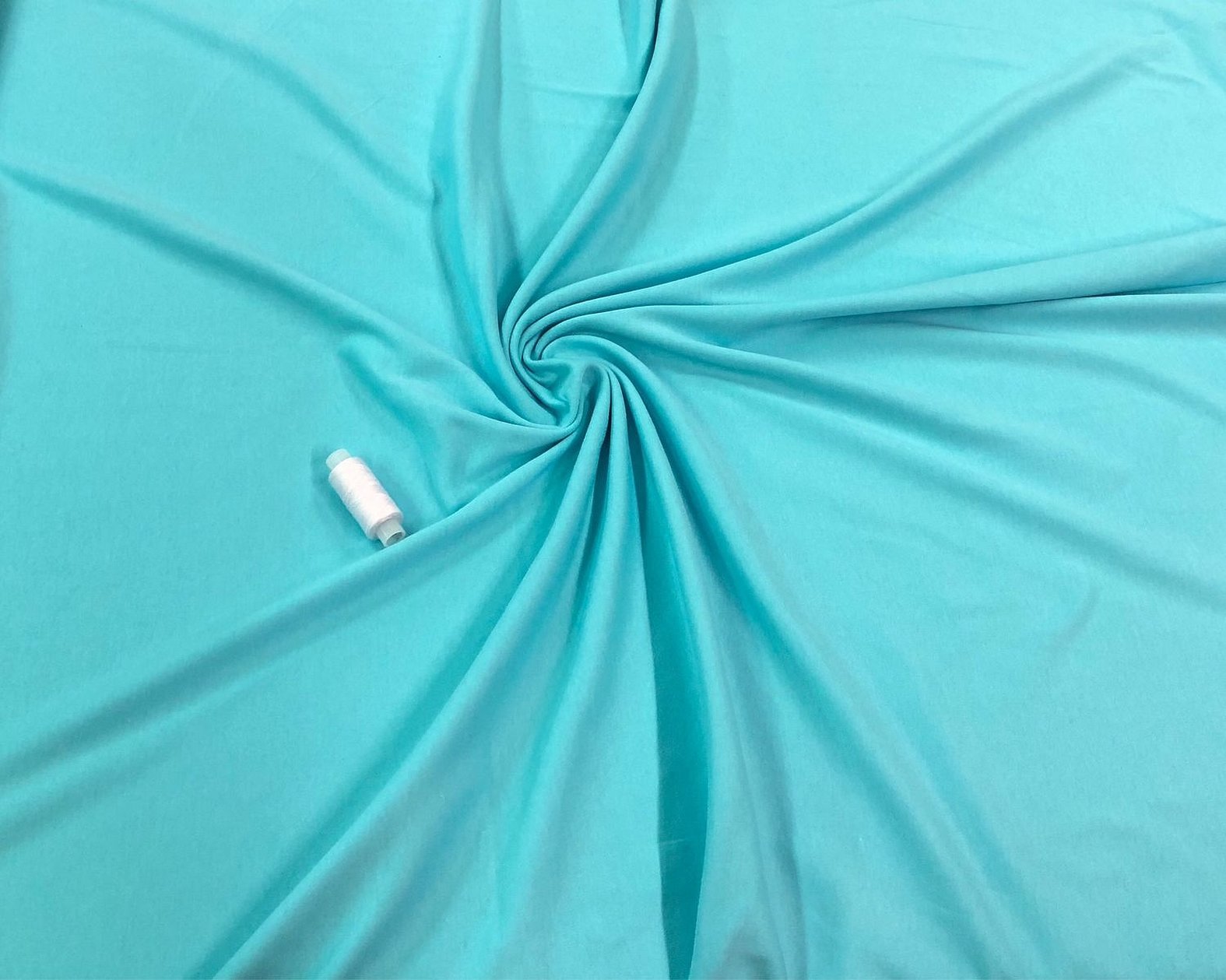
Interlock is translated from English as "overlapping, crossing". The fabric received this name due to its unique type of weaving. The fabric has no back, which makes it more versatile.
Manufacturing technology
The weaving of the material is done on special machines, in which several needles are installed at certain angles. The manufacturing technology consists of the following stages:
- The fibers are initially treated with paraffin and a special emulsion. This impregnation gives the material smoothness.
- The threads are twisted and wrapped together to form full loops.
- The basic formation is achieved by lightly interlacing light satin threads, which are called ribbing.
Please note! This type of material is not woven but knitted, as the fibers are intertwined by interlacing loops.
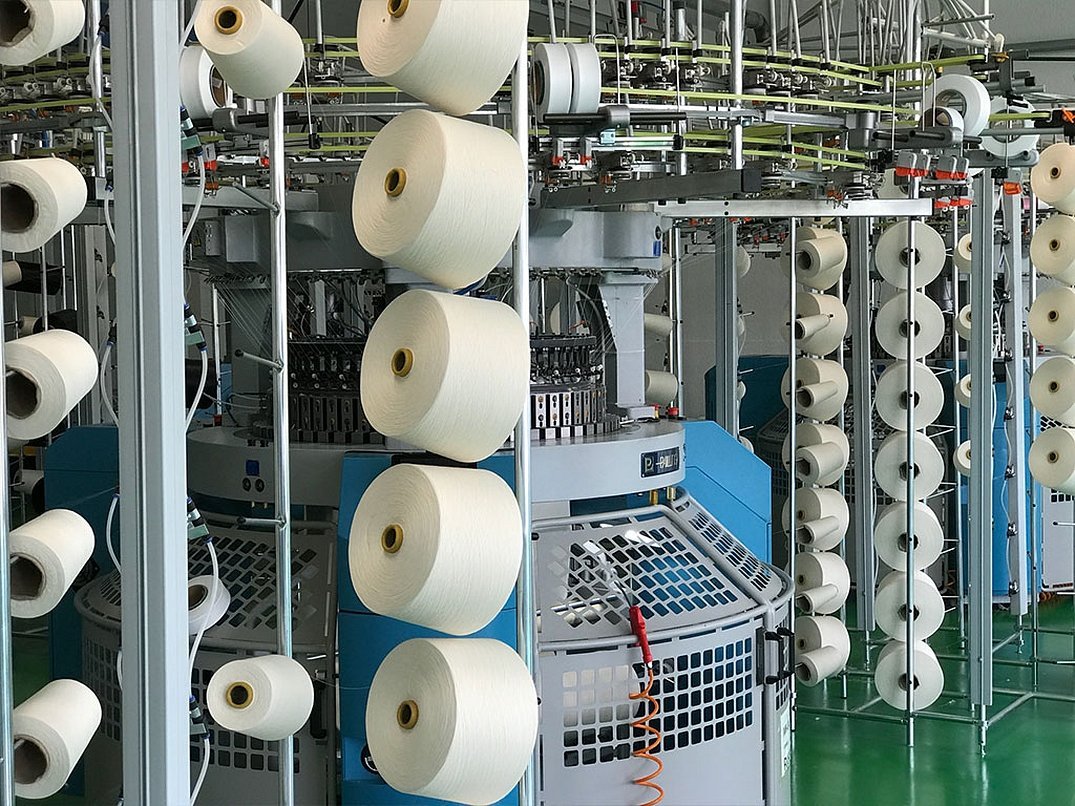
Interlock weaving can be multi-colored. Multi-colored threads are used to form a specific print. A specific pattern is applied by the method of stuffing (printed interlock) - the fibers of the finished fabric are dyed.
Description, properties, composition of the material
Interlock, what kind of material is it and what properties does it have - this is the first question of a beginner in terms of cutting and sewing. The information will also be useful for those who like to buy ready-made things. It is enough to know a full description of textiles:
- The fabric is pleasant to the touch and does not irritate the skin.
- The composition includes only natural cotton fibers, so the fabric is completely hypoallergenic.
- The unique knitting technique makes the material wear-resistant and durable.
- It may stretch a little during use, but will return to its original state.
- Thanks to polishing and impregnation, the whole becomes smooth. This protects it from the appearance of pellets and snags.
- It retains heat well. This makes the material universal - it can be used to make winter and summer clothes.
- A completely environmentally friendly material that quickly turns into organic “fertilizer”.
- The surface has no reverse side, as the weaving is done by the method of precise insertion of loops.
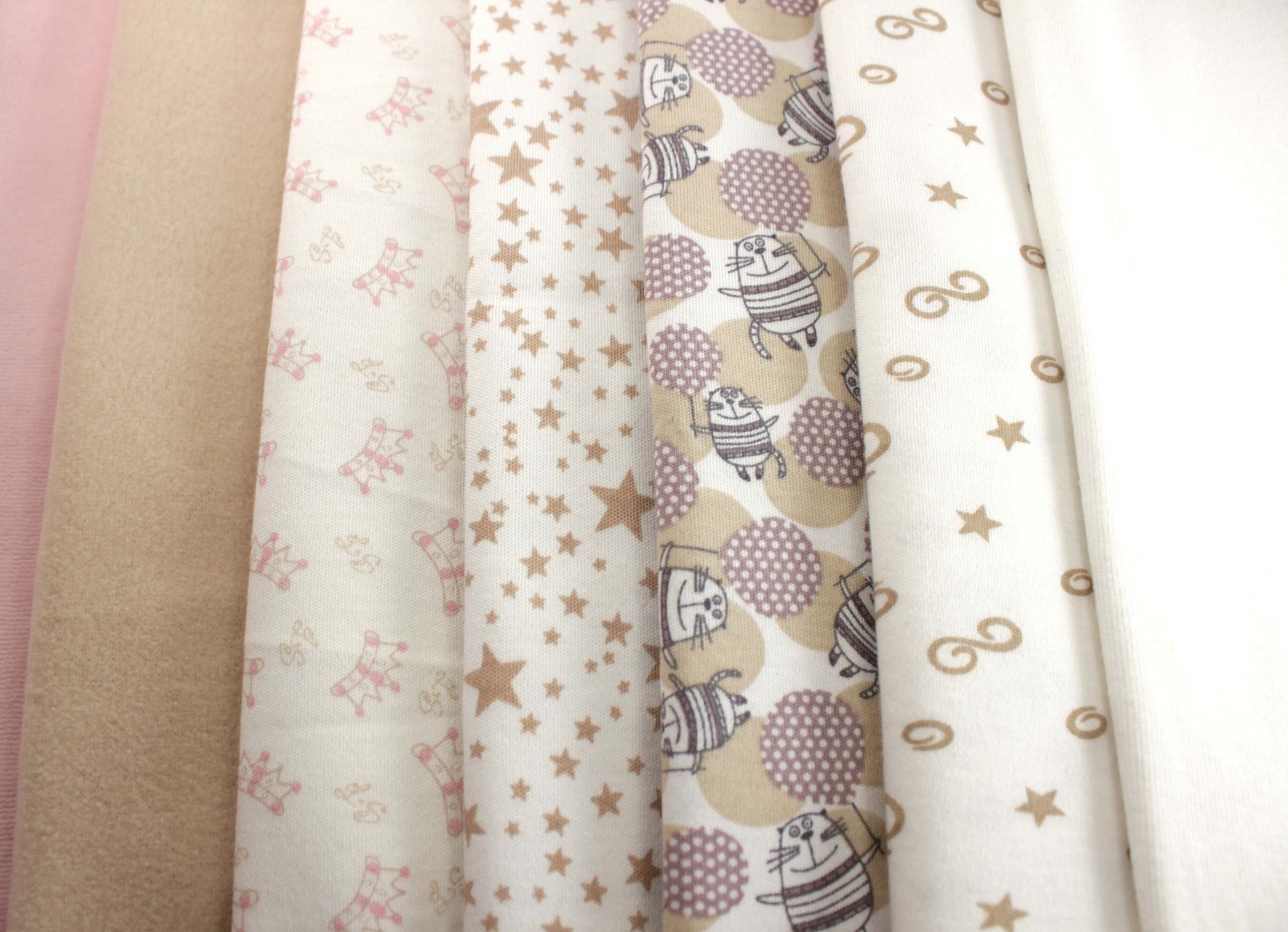
Important! Properties of this type are characteristics of exclusively natural material. If synthetic additives are present, other features may appear.
There are also negative properties. If the care rules are not followed, the fabric shrinks. The base does not stretch much. Serious residual deformation, which increases over time. But minor disadvantages do not make the fabric less popular.
Types of material
Interlock is a natural fabric, so it is quite difficult to make it ideal in appearance and texture. According to these parameters, there are 3 main types of fabric:
- Combed. The best quality fabric. The surface of the material seems polished. There are no extra lint, pellets, protruding loops, or defects on the material. Combed is used to sew high-quality elegant clothes.
- Ring, or as it is also called, carded, is a second-rate option. This interlock knitwear is smooth, but with some defects - the loops may be laid out inaccurately. The fabric is used for sewing summer T-shirts, pajamas, and vests.
- Oppenend is the lowest quality grade. The fabric is loose, uneven, and has a lot of lint and pellets. As a result, items wear out quickly and the fabric becomes deformed. Oppenend is suitable for sewing home clothes.

Additional information! The quality of each type may be reduced due to the addition of synthetic fibers, so you need to read the composition carefully.
Unscrupulous manufacturers write false information on the labels regarding the type of fabric, so you need to focus on quality. The main distinguishing feature is the smoothness of the textile surface. Printed interlock, what kind of fabric is it in terms of production? This is a canvas on which individual parts of the fibers are dyed in order to create a pattern.
The difference between interlock and cooler
There are several types of materials that are very similar in appearance to interlock. One of these is kulirka. In order not to confuse these two completely different fabrics, you need to recognize them by certain features.
The fabric is interlock, which becomes clear almost immediately - the base is dense and more or less uniform. You can clearly see the loops. Due to this, the density of this type of material is greater than that of kulirka.
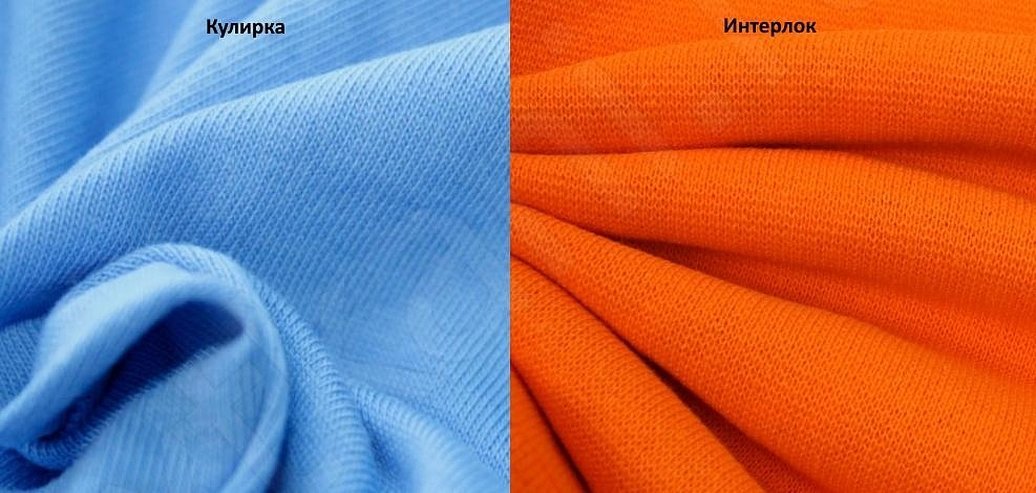
Kulirka consists of 10% polyester fibers, so it may seem rougher to the touch. The texture is uneven, the weave is uneven, and therefore the density of the fabric is minimal. The wear resistance of kulirka is much less than Interlock.
Scope of application
Interlock has a wide range of applications, but most often it is used to sew sports-style clothing:
- Turtlenecks with high necks.
- Sports suits of various configurations.
- Skirts and trousers with a sporty cut.
- Dresses and sundresses.
- T-shirts, tennis shirts, tank tops.
- Home costumes.
In addition to clothing, textiles can be used to make covers for chairs and armchairs. Interlock makes excellent covers for finishing fragile items.

Sewing from this type of material is quite simple. During the cutting process, the threads do not fall apart on the cuts, the fabric does not deform.
Proper care
In order for products made from this type of textile to retain an attractive appearance for a long time, it must be properly cared for. Basic recommendations regarding care:
- The comfortable temperature for washing is 30-40 degrees.
- It is better to wash by hand or use a delicate washing cycle.
- Do not use detergents that contain chlorine.
- The spinning should not be too intense.
- Iron only from the reverse side.
- It is better to dry in a well-ventilated room, protecting items from direct sunlight.
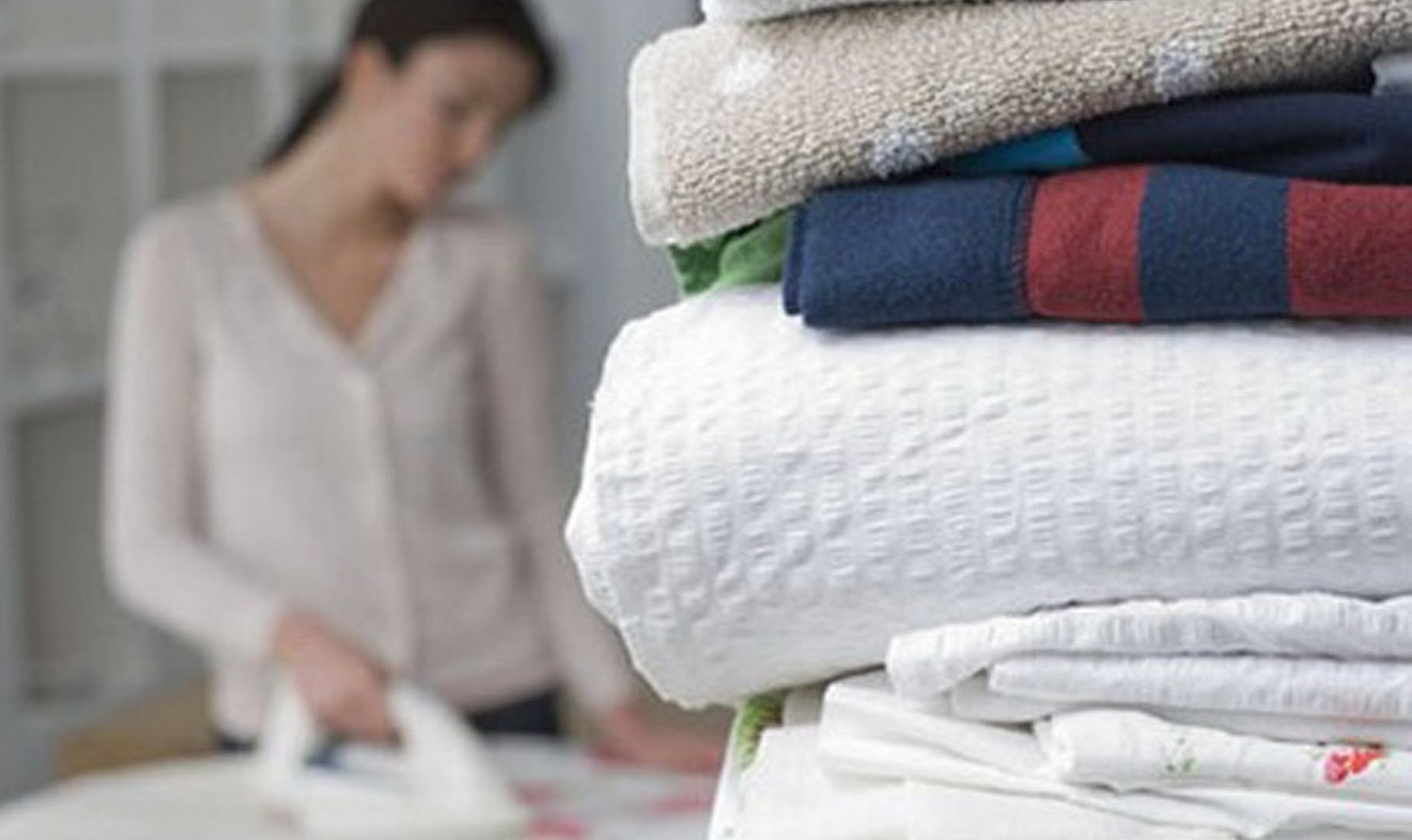
Interlock that has been properly washed, dried and ironed is best hung on hangers to prevent characteristic folds from appearing on the fabric.
Advantages and disadvantages
The interlock material has its own advantages and disadvantages regarding properties, care, and use. The following facts are indisputable advantages:
- If the textile is mechanically damaged, the fabric will not unravel further.
- The flexibility and ability to deform the fabric makes it suitable for wearing during periods of increased physical exertion.
- It does not wrinkle when worn or when left in the closet for a long time, so a carelessly thrown blouse can be worn without the need for re-ironing.
- Thanks to high-quality dyeing of the fibers, the fabric retains its original color for a long time.
There are also some disadvantages that are not significant:
- The high density makes interlock unsuitable for wearing in very hot weather.
- If you do not follow one of the washing rules, the fabric will be completely damaged beyond repair.
- Undefined direction of fiber stretch, which can create problems during wear.

The advantages outnumber the disadvantages. Plus, clothes made from this type of material are comfortable and practical to wear.
Reviews
Cotton interlock is considered a fairly popular material, from which many different things are made. Therefore, there are more than enough reviews about interlock. There are positive and negative comments regarding textiles:
Irina, 35: “I lead a healthy lifestyle, so I go to the gym at least 3 times a week. Thanks to this, I have developed my own sports style. I mainly buy interlock tracksuits. If I buy an expensive set, then there are no problems with wearing it - everything is perfect. If I am greedy, then the suit is worn for no longer than 1 month.”
Arina, 48: “I am an amateur seamstress and a grandmother. I sew home clothes from interlock for my grandchildren. When buying material, I carefully examine the fabric, feel it, and study the labels. I always make the right choice, so I have no complaints about this type of textile. The items always turn out beautiful and are worn for a long time without any problems.”
Ekaterina, 28: “No matter how many things I buy from interlock, I always get some kind of low-quality rag. The material is terrible to wear - the knees stick out, pellets appear on the fabric, the fabric quickly wears out at the folds and seams. I categorically do not recommend buying such things.”
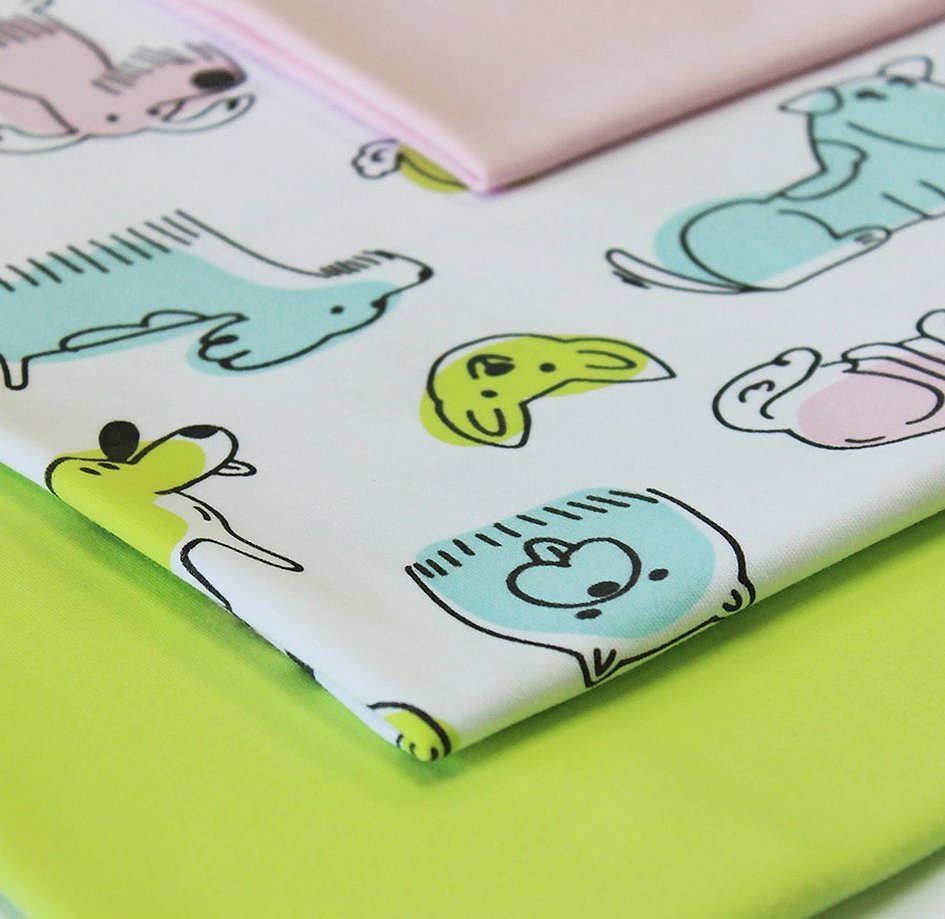
Each person's personal experience is individual; much depends on the situation and wearing conditions.
Knitted fabric of this type is considered a modern type of material, which is distinguished by its durability. It has an attractive appearance and many other positive characteristics concerning color design, hygiene and practicality. Sports enthusiasts and adherents of a sporty style in clothing appreciate this type of material and prefer interlock.




